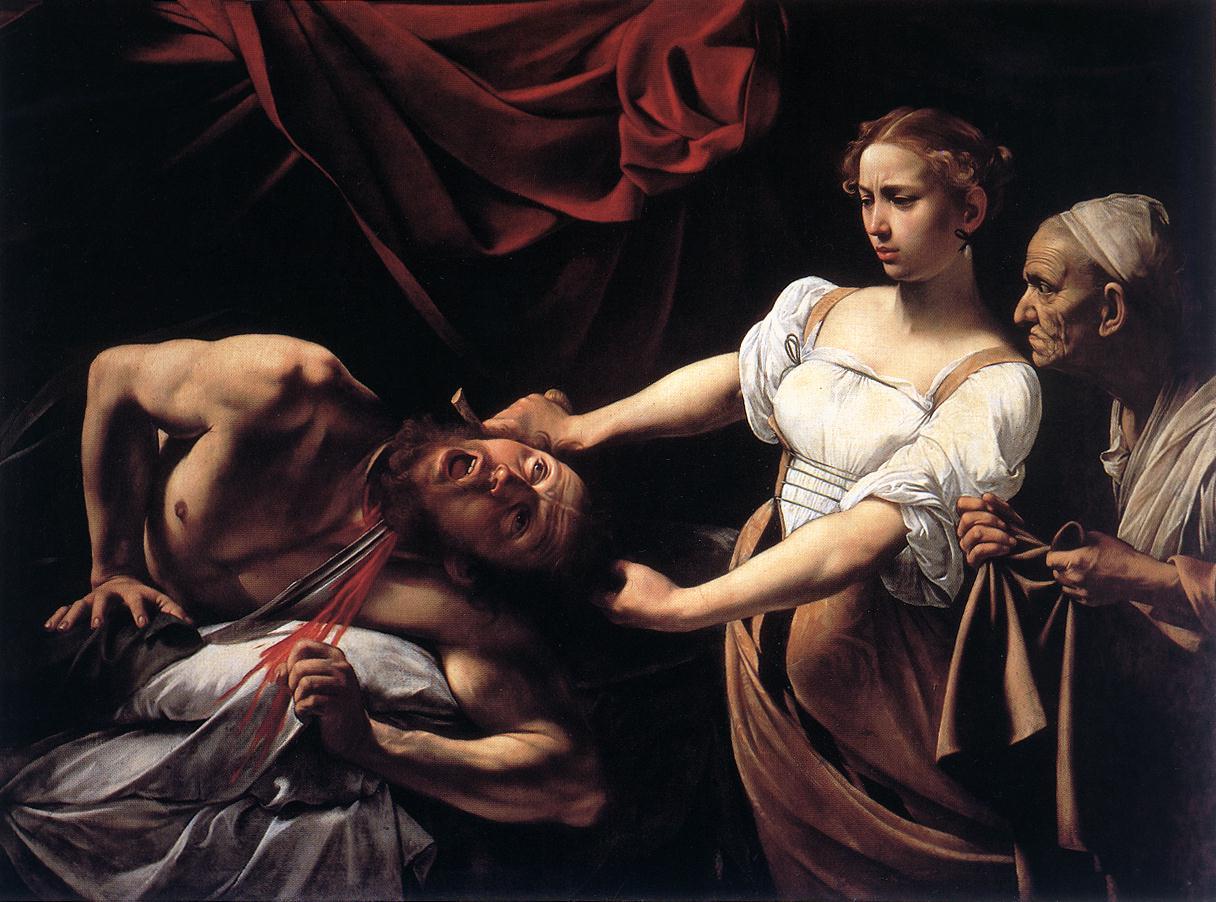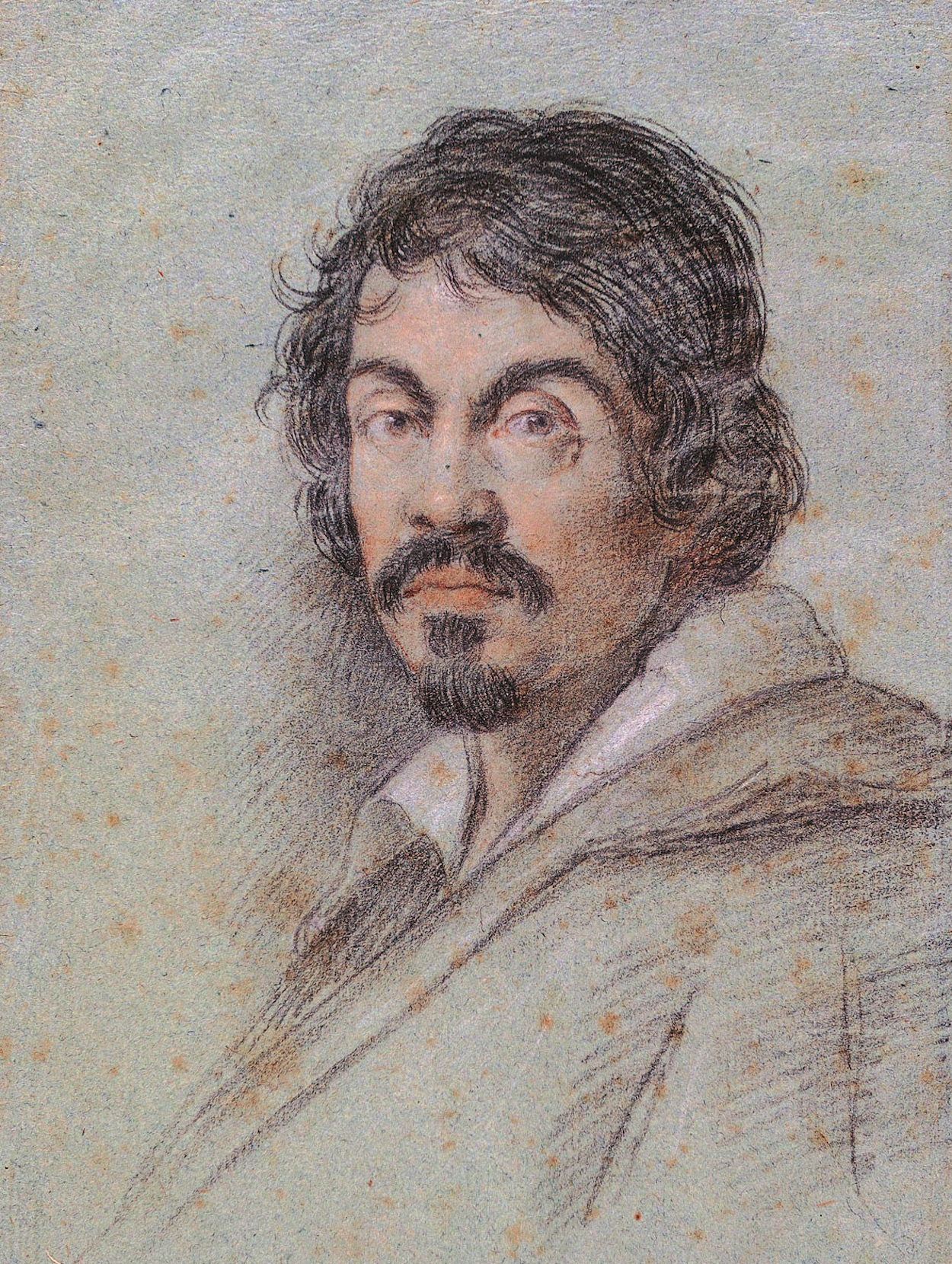The deutero-canonical Book of Judith relates how Judith saved her people by seducing and killing Holofernes, the Assyrian general. Judith gets Holofernes drunk, then seizes his sword and decapitates him: "Approaching to his bed, she took hold of the hair of his head, and said, ‘Strengthen me, O Lord God of Israel, this day!’ And she smote twice upon his neck with all her might, and she took away his head from him." The beheading of Holofernes was a favorite subject of the age, depicted by such names as Donatello, Sandro Botticelli, Andrea Mantegna, Giorgione, Artemisia Gentileschi, and Lucas Cranach the Elder (last two artists published on DailyArt), among various others. Caravaggio's approach was, typically, to choose the moment of greatest dramatic impact, the moment of the decapitation itself. The faces of the three characters demonstrate his mastery of emotion, Judith’s face particularly demonstrating a mix of determination and repulsion. The model for Judith is probably the Roman courtesan Fillide Melandroni, who posed for several other works by Caravaggio around this year. The scene itself, and particularly the details of blood and decapitation, were presumably drawn from his observations of the public execution of Beatrice Cenci a few years prior.




Judith Beheading Holofernes
oil on canvas • 145 cm × 195 cm
 Caravaggio
Caravaggio